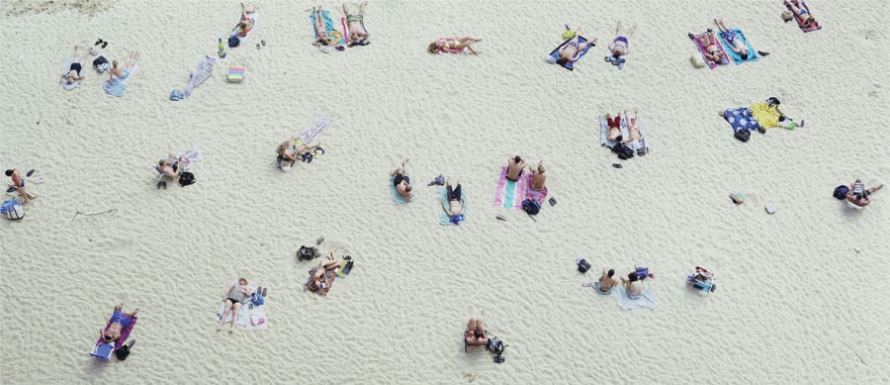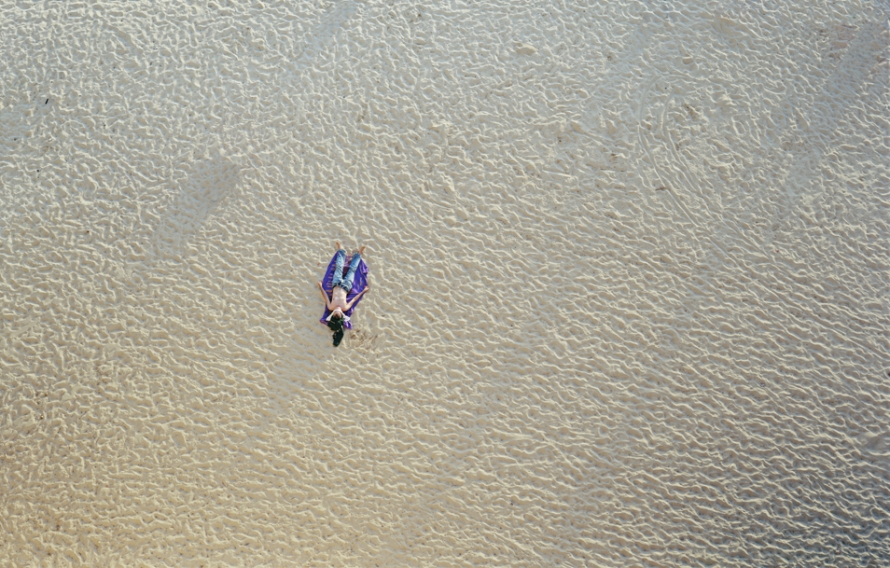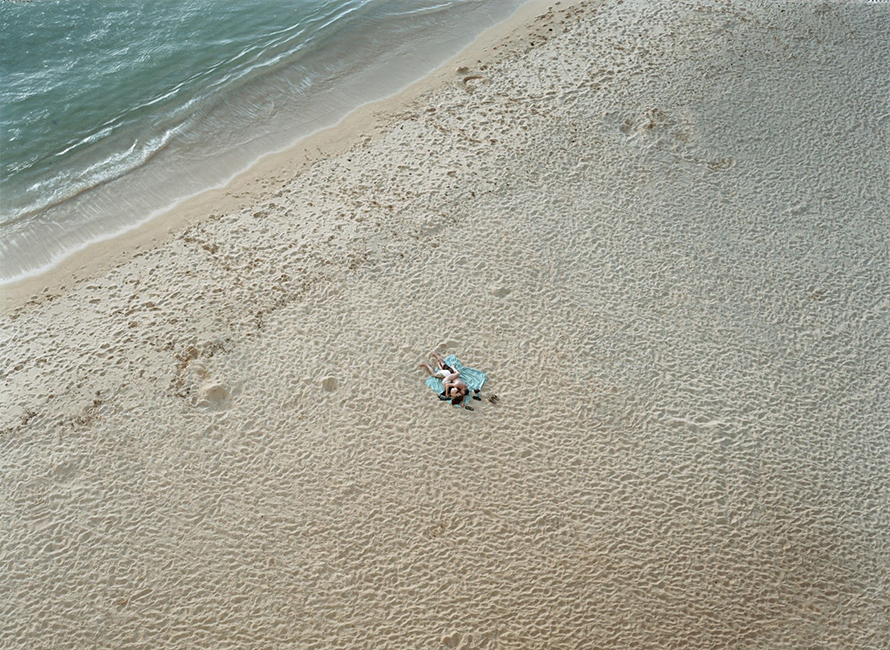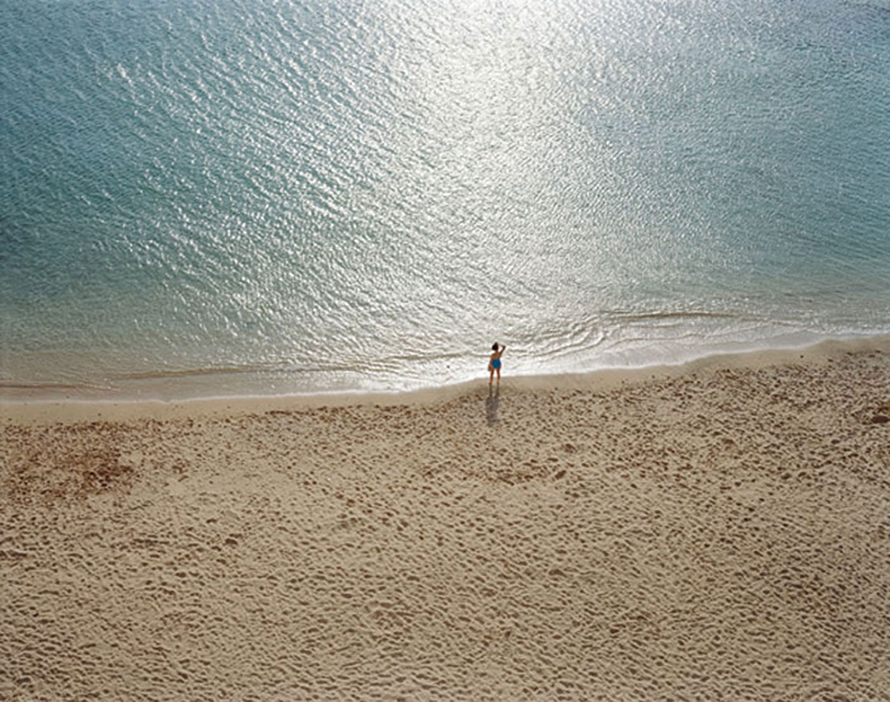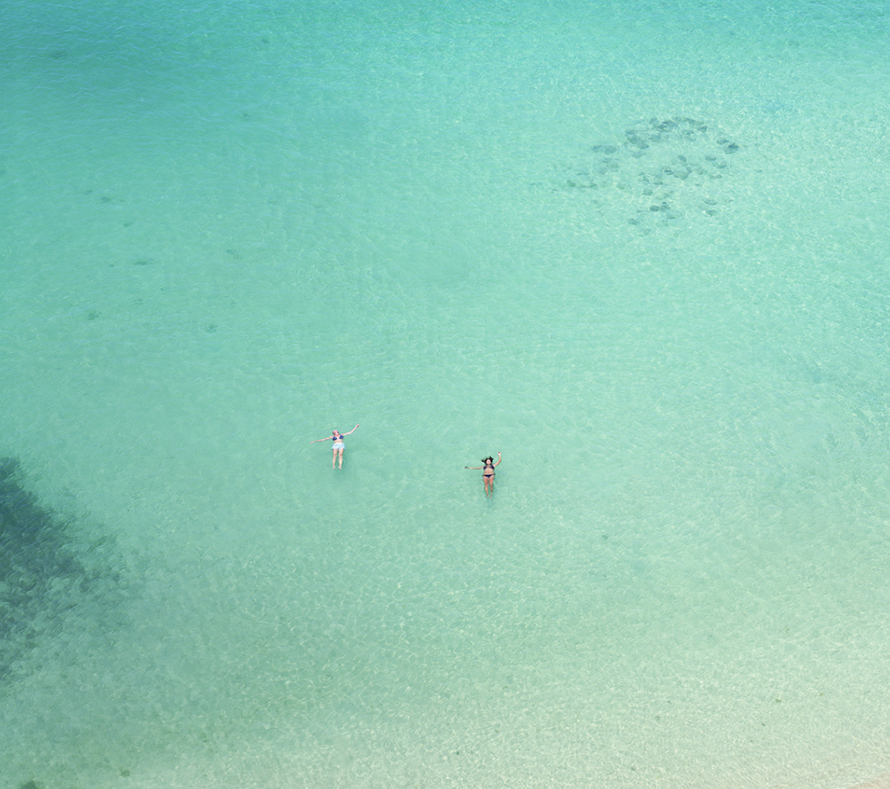What drew you to the beach?
Richard Misrach:I grew up in Los Angeles and spent a lot of time in the ocean. I have always had a great passion for (and healthy fear of) the sea. As a photographer in the 1970s, my first major color project was on the jungles of Hawaii, and I have returned there periodically to work and vacation. After the national trauma of 9/11, everything looked different to me, including how I saw people at leisure. Even the simplest and most innocent of human gestures suggested a vulnerability and fragility that I had not noticed before. I thought it would be a perfect, if unexpected, metaphor for the change in our world.
TMN:Where is the sublime at the beach: on the sand or in the water?
RM:Good question. The sand marks land’s end. Perhaps it is the last foothold. But it, too, is precarious and deceptive. Sand is, after all, terra firma decimated and eroded, and as the recent tsunamis remind us, not much of a refuge. On the other hand, with the sea there is no ambiguity. It is terrifying and beautiful, the very definition of the sublime.
TMN:What American light do you like best?
RM:The light can be surprising and magical anywhere. What amazes me is how important the light remains for me after 40 years of working. It’s the light—as old-school as it sounds—that still fires me up like a little kid when I’m out in the world making pictures.
TMN:It’s often said in biographies that you started off seeing photography as a means for social change, then turned more to art. In so many words, is that true?
RM:I began taking pictures of tear-gassings and demonstrations as a student on the Berkeley campus in the 1960’s, and simultaneously became interested in the great West Coast tradition of photography (Adams, Weston, et al). I have been trying to reconcile those two poles since.
TMN:Was your method for “On the Beach” different from that in “Cantos” or your other projects?
RM:Yes. “On the Beach” foregrounds the human figure, employs digital intervention, and leans more to the narrative than the documentary. It is intentionally more ambiguous and oblique.
TMN:What parts of the world would you like to shoot but haven’t gotten to yet?
RM:I like working as close to home as possible. If I could, I would only make pictures from my front porch.
TMN:So what’s next?
RM:Very superstitious about that. It seems that every time I talk about a project, the idea just dries up. So, I’ll keep that to myself for now…
